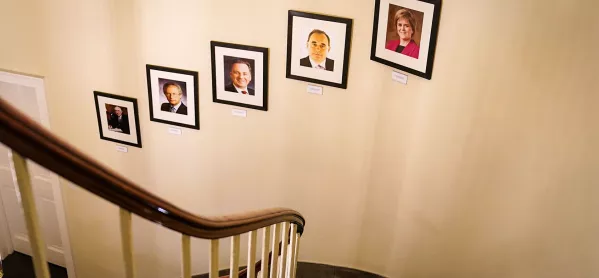Nicola Sturgeon’s big education promise defined her leadership

Nicola Sturgeon set out her stall right from the start of her tenure as Scotland’s first minister - or, if you’re being less generous, she built a rod for her own back.
Education was to be her number-one priority. It never felt like it had been for her predecessor, Alex Salmond, but when Sturgeon took power unchallenged late in 2014, surfing - and fuelling - the surging popularity of the SNP after the independence referendum, she was bold in her ambition for education.
In a defining speech of her early days as FM, in August 2015, Sturgeon said she would put her “neck on the line” by asking that her record ultimately be judged on whether Scotland eliminated the disadvantage-related attainment gap that had blighted education since anyone could remember.
In the months and years that followed, there was some semantic jiggery-pokery: the message seemed to morph so that the government was seeking to “close” the attainment gap - as in narrowing it, rather than eliminating it altogether.
Regardless, that speech, delivered at Wester Hailes Education Centre in Edinburgh, became a weapon that opponents regularly used to attack the FM and her government. Scottish education was failing, they said, and was an indelible stain on the record of the leader who had made it her priority.
Of course, the truth about Scottish education during Sturgeon’s time as leader was more nuanced than it was often portrayed - and where there was progress, much of it was reversed by the Covid pandemic. But she had left herself wide open to such attacks.
- Today’s announcement: What did Nicola Sturgeon say about education in her resignation speech?
- From the archive: Judge me on closing the attainment gap, says Nicola Sturgeon
- Education funding: Teacher job cuts will be blocked, says Sturgeon
- Also today: Teacher pay offer is a ‘tiny baby step’
With hindsight, Sturgeon’s decision in 2015 to set out such an audacious - some might say unachievable - ambition to eliminate the attainment gap has to be understood in the context of the time. Her popularity ratings were through the roof - even now they remain relatively high - and the No vote in the referendum, far from cowing the SNP, had persuaded tens of thousands of people to join its ranks in the aftermath of the September 2014 plebiscite.
Anything seemed possible, so what now appears hubristic must have looked to Sturgeon’s supporters like the sort of self-fulfilling prophesy that popular new leaders like to shoot for when playing the long game of legacy. “We choose to go to the Moon,” said JFK; Nicola Sturgeon was now choosing to eliminate the attainment gap, unperturbed that many previous generations of political leaders of all stripes had singularly failed to do so.
Sturgeon put the spotlight on education
What Sturgeon certainly achieved was to put education front and centre in the Scottish Parliament. And, for better or worse, her focus on education paved the way for the Scottish Attainment Challenge, the Pupil Equity Fund, the near-doubling of free early years hours, the Scottish National Standardised Assessments and much else besides that is part of the furniture of Scottish education in 2023.
Are we now heading towards an era where education is on the sidelines again? Perhaps things are already going that way. Certainly, the Scottish government has never given the impression over the past year that a quick end to the teachers’ pay dispute is a priority. On the other hand, if Sturgeon’s departure means education is less of a political football, many will see upsides to that.
Today, as Sturgeon reflected on her record after eight years as first minister, mentions of education were conspicuous by their absence. She ticked off achievements in making university more accessible to students from poorer areas and in offering 1,140 free early years and childcare hours, and underlined that her commitment to care-experienced young people will endure beyond her time as first minister.
But that was it. Judge me on my education record, Sturgeon said in 2015. Today, she barely talked about it.
Henry Hepburn is Scotland editor at Tes. He tweets @Henry_Hepburn
Register with Tes and you can read two free articles every month plus you'll have access to our range of award-winning newsletters.
Keep reading with our special offer!
You’ve reached your limit of free articles this month.
- Unlimited access to all Tes magazine content
- Save your favourite articles and gift them to your colleagues
- Exclusive subscriber-only stories
- Over 200,000 archived articles
- Unlimited access to all Tes magazine content
- Save your favourite articles and gift them to your colleagues
- Exclusive subscriber-only stories
- Over 200,000 archived articles



